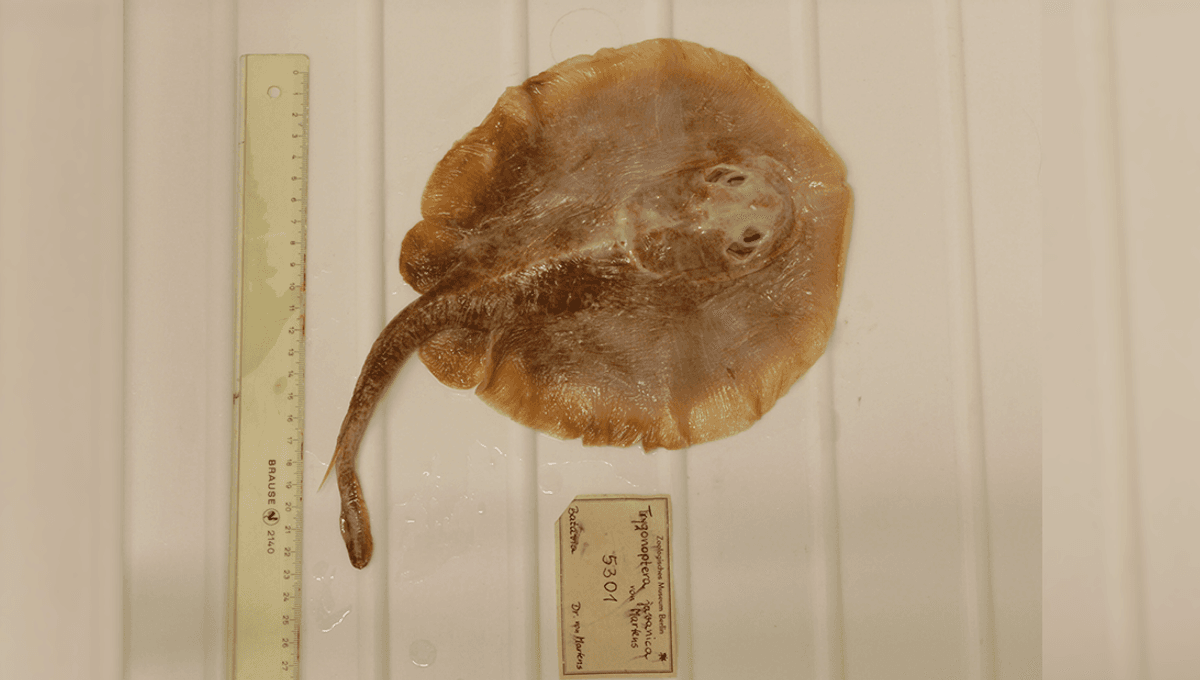
The Java stingaree (Urolophus javanicus) has become the first marine fish species to go extinct as a result of human activity according to scientists at Charles Darwin University (CDU), Australia. It was declared following an update to the Red List of Threatened Species published by the International Union for Conservation of Nature (IUCN) in December.
The Java stingaree is a species of ray about the size of a dinner plate, and it was so rare that it was only known from one specimen collected in 1862 from a fish market in Jakarta, Indonesia. Fishing was just one of several pressing threats the species faced.
“Intensive and generally unregulated fishing is likely the major threat resulting in the depletion of the Java Stingaree population, with coastal fish catches in the Java Sea already declining by the 1870s,” said CDU PhD Candidate and lead assessor, Julia Constance, in a statement.
“The northern coast of Java, particularly Jakarta Bay where the species was known to occur, is also heavily industrialised, with extensive, long-term habitat loss and degradation. These impacts were severe enough to unfortunately cause the extinction of this species.”
The team of international scientists gathered all available information on the species, including surveys and monitoring project data, and through modelling concluded that the Java stingaree has become the first marine fish to go extinct due to human activity.
“A range of fish landing sites along the northern coast of Java and across Indonesia have been monitored extensively but they have not recorded the Java Stingaree,” said CDU PhD Candidate Benaya Simeon, who is studying threatened rays in Indonesia. “The Java Stingaree was a unique dinner plate-sized ray with no similar species in Java and the fact it has not been found during innumerable surveys confirms its extinction.”
The bad news follows the first extinction alert in 70 years issued by the International Whaling Commission (IWC), this time for a marine mammal called a vaquita (Phocoena sinus). It’s estimated just 10 vaquitas remain in the Gulf of California, Mexico, and if we don’t take action now, it could soon go the same way as the Java stingaree.
“The Java Stingaree being named as extinct is a warning sign for everyone across the world that we must protect threatened marine species,” said CDU’s Research Institute for the Environment and Livelihoods Senior Research Fellow Dr Peter Kyne. “We must think about appropriate management strategies like protecting habitat and reducing overfishing while also securing the livelihoods of people reliant on fish resources.”
Source Link: First Extinction Of A Marine Fish As A Result Of Human Activity Declared